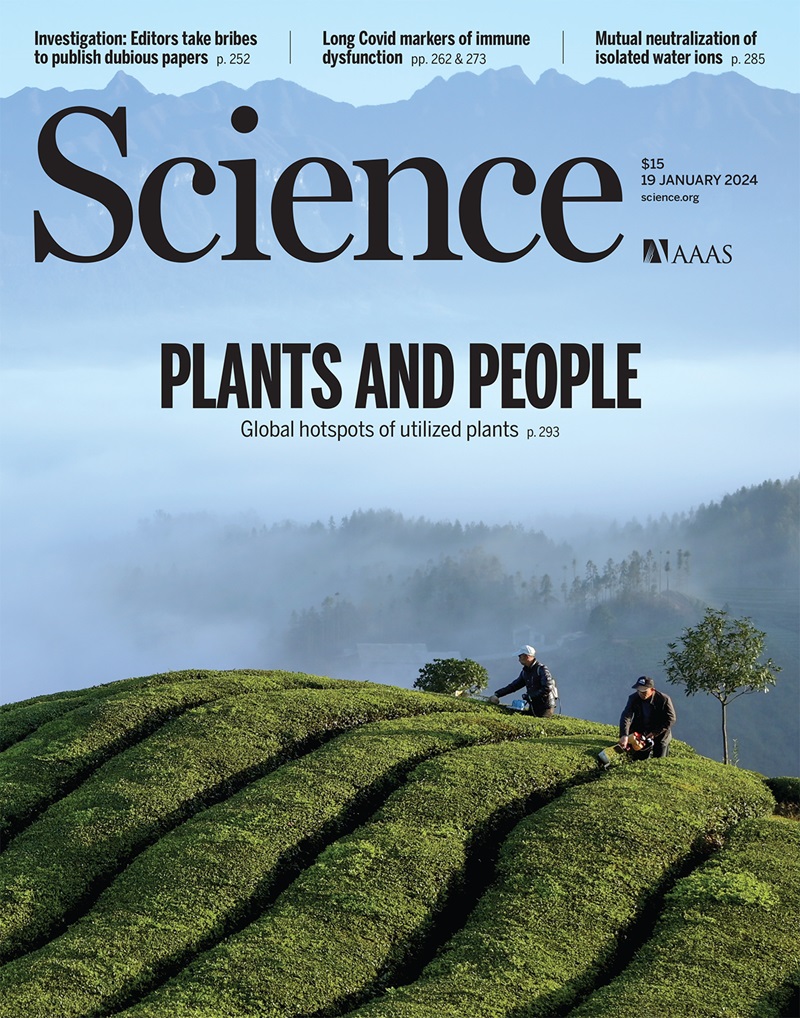巨Y染色体的快速动态进化
IF 45.8
1区 综合性期刊
Q1 MULTIDISCIPLINARY SCIENCES
Science
Pub Date : 2025-02-06
引用次数: 0
摘要
一些植物有大量的性别连锁区域。为了验证关于它们进化的假设,我们对Silene latifolia的基因组进行了测序,其中巨大的异型性染色体于1923年首次被发现。人们早就知道,Y染色体主要由一个不与X染色体重组的男性特异性区域组成,该区域携带决定性别的基因和具有其他男性功能的基因。然而,只有在一个完整的Y染色体组合中,候选基因才能被实验验证,并确定它们的位置,并与抑制重组有关。我们描述了祖先染色体进化成当前的XY对时的基因组变化,测试了关于大型非重组区域进化的想法和创造当前重组模式的机制。本文章由计算机程序翻译,如有差异,请以英文原文为准。
Rapid and dynamic evolution of a giant Y chromosome in Silene latifolia
Some plants have massive sex-linked regions. To test hypotheses about their evolution, we sequenced the genome of Silene latifolia, in which giant heteromorphic sex chromosomes were first discovered in 1923. It has long been known that the Y chromosome consists mainly of a male-specific region that does not recombine with the X chromosome and carries the sex-determining genes and genes with other male functions. However, only with a whole Y chromosome assembly can candidate genes be validated experimentally and their locations determined and related to the suppression of recombination. We describe the genomic changes as the ancestral chromosome evolved into the current XY pair, testing ideas about the evolution of large nonrecombining regions and the mechanisms that created the present recombination pattern.
求助全文
通过发布文献求助,成功后即可免费获取论文全文。
去求助
来源期刊

Science
综合性期刊-综合性期刊
CiteScore
61.10
自引率
0.90%
发文量
0
审稿时长
2.1 months
期刊介绍:
Science is a leading outlet for scientific news, commentary, and cutting-edge research. Through its print and online incarnations, Science reaches an estimated worldwide readership of more than one million. Science’s authorship is global too, and its articles consistently rank among the world's most cited research.
Science serves as a forum for discussion of important issues related to the advancement of science by publishing material on which a consensus has been reached as well as including the presentation of minority or conflicting points of view. Accordingly, all articles published in Science—including editorials, news and comment, and book reviews—are signed and reflect the individual views of the authors and not official points of view adopted by AAAS or the institutions with which the authors are affiliated.
Science seeks to publish those papers that are most influential in their fields or across fields and that will significantly advance scientific understanding. Selected papers should present novel and broadly important data, syntheses, or concepts. They should merit recognition by the wider scientific community and general public provided by publication in Science, beyond that provided by specialty journals. Science welcomes submissions from all fields of science and from any source. The editors are committed to the prompt evaluation and publication of submitted papers while upholding high standards that support reproducibility of published research. Science is published weekly; selected papers are published online ahead of print.
 求助内容:
求助内容: 应助结果提醒方式:
应助结果提醒方式:


